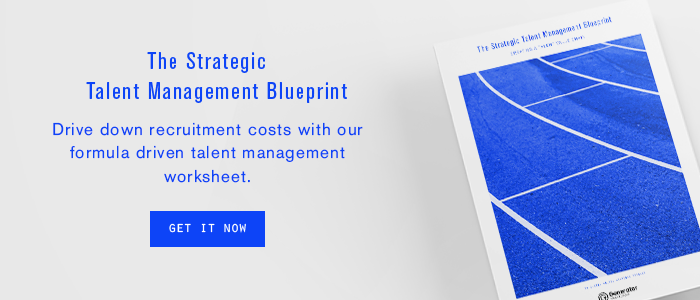30th January 2018
Dive into 2018 with a strong talent pooling strategy
Strong and proactive recruitment talent pooling can help your organisation start off 2018 on the right foot. When aligned with broader business strategy, forward thinking talent pooling can transform your firm’s recruitment – and its overall performance.
Talent pool recruitment is a research based approach that builds a fine tuned database of about a dozen perfectly suited candidates for your organisation.
With a talent pool strategy, instead of passively responding to the ebbs and flows of employee turnover, you can actively cultivate the next generation of talent to revolutionise your team.
4 benefits of a strong talent pooling strategy
1. Less recruitment expenditure
One of the major benefits of talent pools is their dramatic reduction in recruitment costs and timelines. Instead of the lengthy vacancy advertising and candidate interviewing process, you have a capable and pre-vetted talent pool to draw from.
2. Minimal loss of productivity
A talent pool also helps minimise one of the largest indirect costs of employee turnover: loss
of productivity. Talent pooling minimises the impact of productivity loss by shortening the time to hire and maximising the offer-to-acceptance ratio.
3. Better results for your company
Sometimes the best candidate isn’t in the job market yet. By circumventing the traditional advertise and interview process, a talent pool can help you afford to be pickier in your recruitment.
This is because you’re not scrambling to fill a sudden vacancy, having already fostered long term relationships with people who align with your talent needs and values. Such a forward-thinking approach can only stand to benefit your team’s performance and overall brand.
4. Cost effective approach to team growth
What’s more, talent pool management is particularly cost effective for those looking to build new teams or scale up operations during peak growth periods. This is because it involves building maps and pools of talent across all key functional areas without incurring transactional placement fees; offering potential economies of scale.
How to develop a strong talent pooling strategy
1. Map your business strategy and future recruitment needs
Your company’s strategic direction — for the current financial year and beyond — should be a key driver of recruitment. Take into account future growth and expansion plans, and upcoming planned projects. Undertake skills gap analysis and consider worst-case ‘what if’ scenarios of how your company would respond if key team members left.
Your goal is to identify gaps in your current talent pipeline and key roles that will help your business reach its goals, mapping out all hires you’ll need in the foreseeable future.
2. Gather talent intelligence
Building a superior talent pool requires in depth talent intelligence — particularly when it comes to the hyper-competitive market of executive search.
A market mapping process will add a data driven edge to your talent strategy planning. It’ll help you leverage actionable insights on job markets, potential candidates, your competitors and their strategies.
3. Build a prototype talent pool
Next, start building your prototype talent pool, with a view to refining and customising it over time for your particular business and industry. Include both internal and external candidates, and identify the KPIs and key skills needed for the role(s), aligned with your overall business strategy.
Utilise multiple talent acquisition methods and record the results for testing. Networking events, graduate programs, employee referral programs and social media can all be avenues for attracting the right people to your talent pool.
Next, start building your prototype talent pool, with a view to refining and customising it over time for your particular business and industry. Include both internal and external candidates, and identify the KPIs and key skills needed for the role(s), aligned with your overall business strategy.
4. Assess and finetune your strategy
The key to finetuning your recruitment pooling strategy is constant review, troubleshooting and improvement to smoothen and refine the process over time.
Set metrics to measure the strength of your strategy and actively monitor outcomes for continual improvement. For instance, you may measure your employer brand by the number of unsolicited expressions of interest or your offer-to-acceptance ratio.
Ongoing talent forecasting will enable your company to stay ahead. After all, it’s not just about filling a seat in your office but planning for your company’s future.
Get started
To supercharge your talent pool development, download our practical Talent Modelling Blueprint. It is a formula driven spreadsheet designed to help you develop a proactive, data-based talent management strategy. Get your free copy by clicking the image below.
Categories: Acquiring Talent





